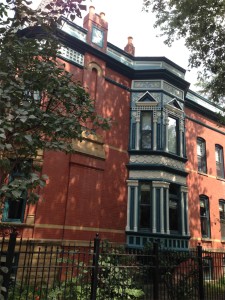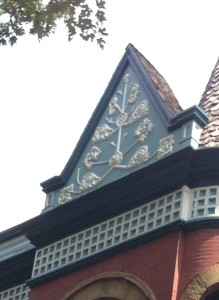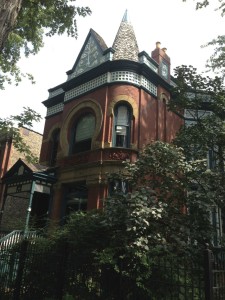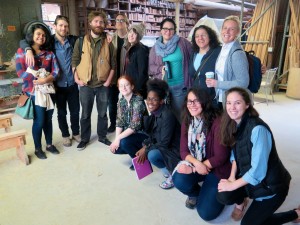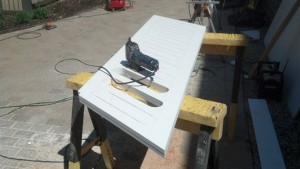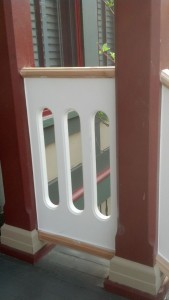One of our Chicago clients, who is the proud owner of a Chicago historical row house, is poised to transform the appearance of the façade of his building through the use of new paint colors. As house painting contractors, who specialize in historical restoration. we are especially found of working on projects such as this, where we can help beautify a building and fulfill a client’s vision.
Our client has done a wonderful job in decorating the interior of his house in a “Period” appropriate way, while expressing his personality. Our working relationship began last year when he hired our painting company to (install and decorate a Lincrusta wallcovering) below the chair rail in his Foyer/Stairway area.. We will soon be adding stencils to the surfaces above the chair rail to complete the look.
Last year, we had a brief discussion about his building’s facade, but he was not ready to pull the trigger yet. This year he is! As shown in the attached picture, the façade is very plain currently, which bothers him. He is looking to have it be outstanding on his block! Knowing his need, we scheduled a Color and Concept consultation, to help develop a color palette that meets his requirement and likes. A six-color scheme emerged from a two-hour meeting with the client, as shown in the attached picture.
You may now wonder how these colors will be combined on the available surfaces to create a well-balanced and attractive overall design. This is where the studio portion of the consultation comes into play, in which we experiment with different color placement until we arrive at the desired result. This is the stage where we are at right now. Stay tuned for Part 2 of this article showing the completed painted work on the façade of this historic building.







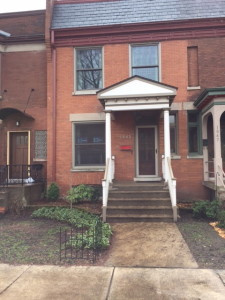
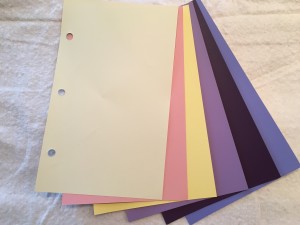
 Follow
Follow

